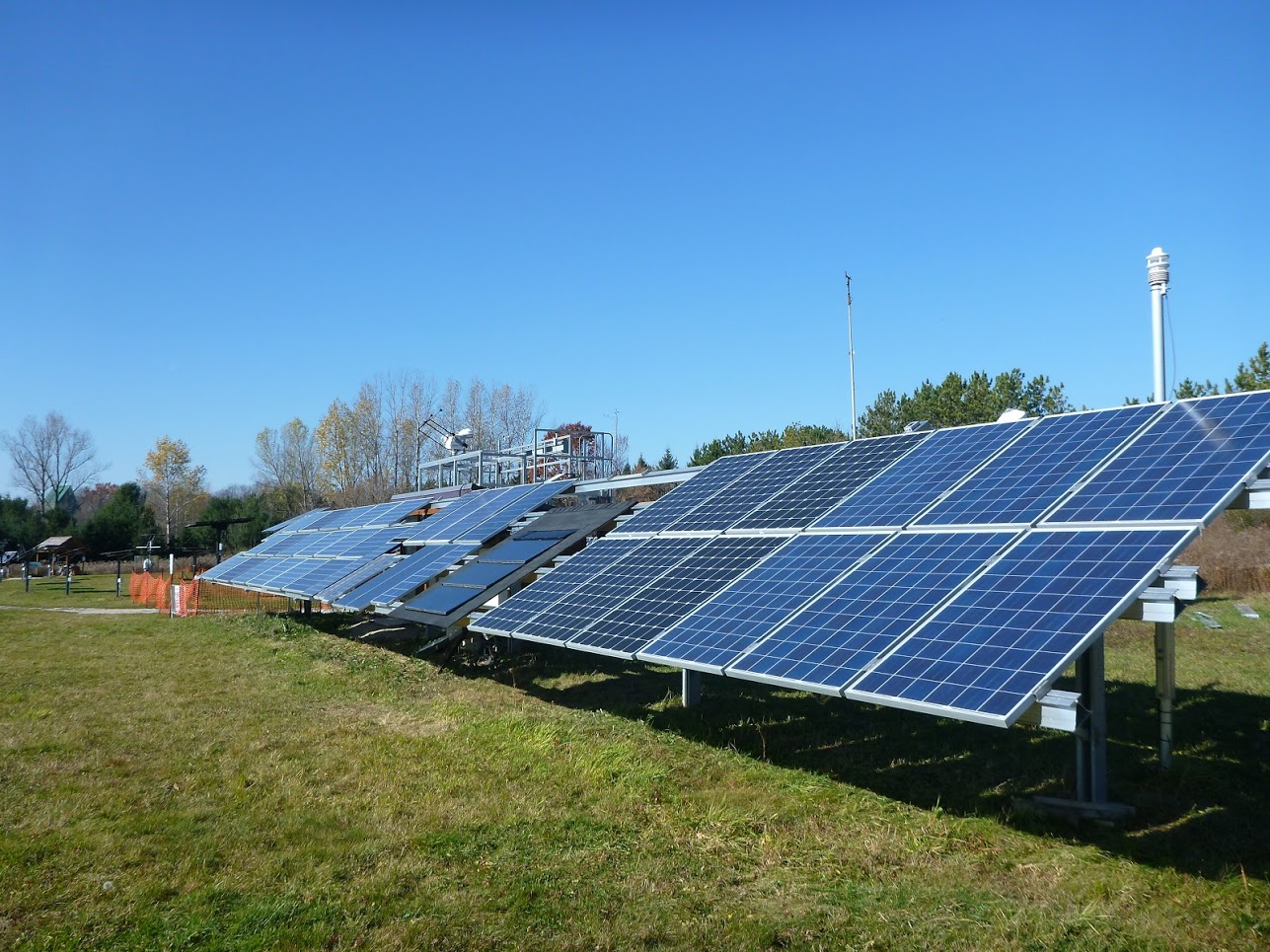Lead Proponent: Toronto and Region Conservation Authority
Location: Toronto, ON
ecoEII Contribution: $ 1,060,000
Project Total: $ 1,442,000
Project Background:
The Kortright Centre for Conservation is owned and operated by the Toronto and Region Conservation Authority (TRCA). Located on the Centre’s expansive property, is a solar test site equipped with a solar radiometric weather station, an automated I-V measurement system, an outdoor incidence angle modifier test setup and approximately 40 kW of photovoltaic (PV) solar panels connected to various types of inverters. PV technologies are demonstrated, monitored, and assessed under various weather conditions at the site.
Photovoltaic (PV) module performance ratings describe how much power a module produces under certain conditions and are important for consumer decision-making and financial evaluations of investments in PV installations. PV modules are typically rated at a single operating point, referred to as standard test conditions (STC), which is defined by a temperature of 25°C, an irradiance of 1000 W/m2 and an AM 1.5 irradiance spectrum, as per International Electrotechnical Commission (IEC) 61215. While STC is convenient for laboratory testing, it is not necessarily representative of real-world module performance. Enhancements in module design that improve real-world performance may not result in a better module rating under STC. This hinders innovation and introduces consumer uncertainty. The IEC 61853 series of standards addresses these concerns by providing a module rating that is more representative of the expected real-world module performance.
Due to Canada’s varied climatic conditions, addressing the discrepancy between STC power ratings and power under real world operating conditions is fundamental to the successful integration of PV to the country’s energy supply mix. Recognizing the knowledge gap, Toronto Region Conservation Authority (TRCA) proposed the project “Kortright Energy Yield Test Standard” for ecoEII funding. The project was awarded $1,060K to support the development of IEC 61853 and evaluate its applicability and efficacy in the Canadian climate, and also to determine whether the requirements of existing power quality standards are sufficient at preventing high current harmonic emissions of solar PV inverters from entering the grid.
Results

Solar field test site at Kortright Centre for Conservation, showing solar PV arrays in the foreground, and test and measurement equipment behind
IEC 61853 consists of four parts and includes procedures for expanded module characterization, as well as climate datasets and calculation procedures for determining the module rating (termed “Climate Specific Energy Rating” or CSER). Instruments to monitor the electrical characteristics of the PV modules under test, as well as the insolation characteristics of the test site were installed at the Kortright Centre. Performance tests and evaluations were conducted in accordance with IEC 61853. Findings suggest that the matrix of performance testing points used in the IEC 61853 standard (with module temperatures from 15 to 75°C and irradiance levels from 100 to 1100 W/m2) may not adequately represent the considerably large portion of energy that is produced at cold temperatures in Canada. Recommendations for revisions to the standards were submitted to the IEC, and some have already been incorporated.
The power quality of four different installations of solar PV inverters across a wide range of real-world operating conditions was determined through long-term monitoring. The installations ranged in size from approximately 6 to 40 kW and were all located in Vaughan, Ontario. At each installation, a power quality analyzer was deployed for up to a year. Actual total demand distortion (TDD) and individual harmonic distortion factors were measured and calculated, then compared with harmonic current emission limits specified in CAN/CSA-C22.2 NO. 257-06 and IEEE 1547. In general, the PV inverters performed in compliance with the power quality limits outlined in the grid-interconnection standards. Deviations from this behaviour were infrequent. The power quality of solar PV inverters is therefore not considered to be a significant barrier towards future deployment of PV. However, it is recommended that there be specific current harmonic emission limits set for systems operating at low power.
Benefits to Canada
The development and adoption of consistent PV standards applicable and relevant Canadian context will instill consumer confidence and accelerate market uptake.
Next Steps
Follow up on the comments summited to the IEC for the next release of IEC 61853 Parts 1&2. Work with CSA to include a low power operating point (on the scale of 10% of the rated inverter capacity, or less) for the current harmonic emission requirements set out in CAN/CSA-C22.2 NO. 107.1-01